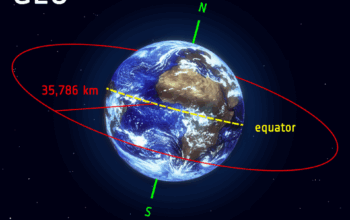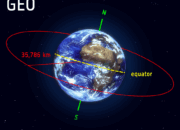The quest to uncover extraterrestrial life has tantalized humanity for centuries, a pursuit steeped in the scientific method and imbued with philosophical undertones. Recent astronomical discoveries have ignited renewed interest in the prevalence of Earth-sized planets within our galaxy, characterized as potential habitats for life. This article delineates the implications of these findings, addressing common observations while probing into deeper existential questions surrounding our fascination with the cosmos.
Historically, the notion of other worlds—possibly inhabited—has been woven into the very fabric of human curiosity. From the musings of ancient astronomers to modern astrophysicists, the belief in habitable planets beyond Earth has transitioned from speculation to scientific inquiry. Traditionally, the discourse revolves around the so-called “Goldilocks Zone,” the orbital region around a star where conditions might be just right to sustain liquid water, a critical prerequisite for life as we understand it.
The advent of advanced astronomical instruments has heralded a new era in the detection of exoplanets, particularly those comparable in size to Earth. Missions such as NASA’s Kepler and TESS (Transiting Exoplanet Survey Satellite) have significantly expanded our understanding of planetary systems. Observations indicate that small, rocky planets, akin to our own, may be far more common throughout the Milky Way galaxy than previously posited. This paradigm shift arises from the incremental refinement of detection methods and a deeper analysis of the multitude of stars that populate our cosmos.
One particularly compelling statistic emerges from data generated by these missions: studies suggest that roughly 20% of sun-like stars harbor Earth-sized planets orbiting within their habitable zones. Given the estimated 200 billion stars in our galaxy, this implies the existence of tens of billions of potentially habitable planets. Such a staggering number invites not only awe but also introspection about the implications of our existence within a vast and possibly teeming universe.
However, the significance of finding Earth-sized planets extends beyond mere numbers. It compels scientists to consider the environmental attributes of these distant worlds. Planetary atmospheres and geophysical processes are critical in determining habitability. Factors such as atmospheric composition, magnetic fields, and geological activity play a pivotal role in sustaining conditions favorable to life. Furthermore, the presence of a stable climate, facilitated by the planet’s position relative to its star, greatly bolsters the likelihood of life. Thus, astrobiological inquiries must evolve to encompass not only the number of planets but also their specific characteristics.
Moreover, the hypothesis of there being a multitude of Earth-like worlds raises profound philosophical questions concerning the uniqueness of life on our planet. If life has arisen elsewhere, how might it differ from that of Earth? What forms might it take, and how might it evolve? This invites speculation into the nature of consciousness, intelligence, and the conditions under which life might thrive or perish. The potential diversity of life forms adds layers of complexity to our understanding of biology itself, as it challenges the anthropocentric ethos that has historically dominated scientific thought.
To ascribe meaning to these discoveries, one must also consider the implications of detecting biosignatures or technosignatures—substances or signals indicative of life. The search for such signatures has intensified, with astronomers meticulously analyzing the atmospheres of exoplanets for gases such as oxygen, methane, and carbon dioxide, which could signify biological activity. While speculative in nature, the detection of definitive signs of life would usher in a paradigm shift, transforming our perspective on humanity’s place in the cosmos.
In parallel, the implications of the frequency of Earth-sized planets resonate with astrobiological concerns relating to extremophiles—organisms that thrive in the most adverse conditions on Earth. Studies of these organisms highlight the potential for life in environments previously deemed inhospitable, thereby expanding the criteria scientists use to define habitability. Such revelations hint at an astounding resilience of life itself, igniting hopes that life may persevere even under alien conditions.
However, the fascination with Earth-sized planets also demands critical reflection on our responsibilities. The knowledge that numerous planets may harbor life invites ethical considerations regarding the exploration and potential colonization of these worlds. The precautionary principle, rooted in environmental ethics, underscores the necessity of protecting potential extraterrestrial ecosystems from human-induced harm. Thus, while the urge to explore and possibly inhabit other planets is instinctual, it must be tempered with an awareness of the broader consequences of these endeavors.
In conclusion, the burgeoning understanding that Earth-sized planets may be ubiquitous throughout the galaxy reshapes our inquiries into extraterrestrial life. This realization not only exudes a sense of hope but also beckons us to reconsider our philosophical stance regarding life in the universe. As we advance our methodologies and refine our investigative techniques, we stand on the precipice of a transformative epoch in human history. The recognition of potentially habitable worlds invites a renaissance of curiosity and ethical contemplation, fueling the age-old desire to comprehend our cosmic significance in an ever-expanding universe.










